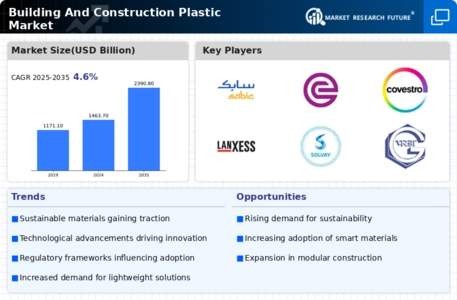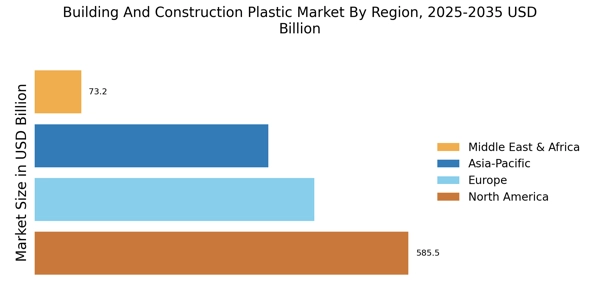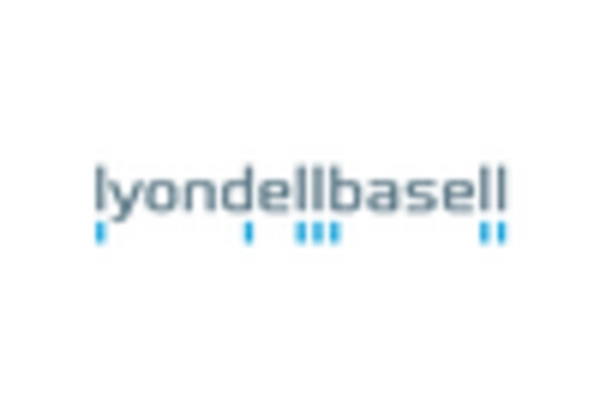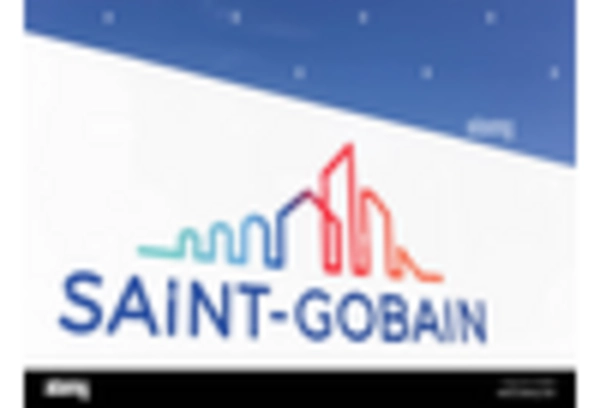Cost Efficiency
Cost efficiency remains a crucial driver in the Building And Construction Plastic Market, as construction firms seek to optimize budgets without compromising quality. Plastics offer a cost-effective alternative to traditional materials, providing durability and longevity at a lower price point. The ability to reduce labor costs through easier handling and installation further enhances the appeal of plastic materials. As construction projects become increasingly complex, the demand for materials that can deliver both performance and cost savings is likely to rise. This focus on cost efficiency is expected to propel the growth of the Building And Construction Plastic Market, as stakeholders prioritize value-driven solutions.
Urbanization Trends
Rapid urbanization is a significant driver of the Building And Construction Plastic Market, as more people migrate to urban areas, increasing the demand for housing and infrastructure. This trend is particularly evident in developing regions, where urban populations are expected to double by 2050. The need for efficient construction materials that can be produced quickly and cost-effectively is paramount. Plastics, known for their versatility and lightweight properties, are becoming increasingly popular in urban construction projects. The market for building and construction plastics is anticipated to expand as urban planners and developers seek innovative solutions to accommodate growing populations. This urbanization trend is likely to sustain demand for plastic materials in the construction sector.
Regulatory Compliance
Regulatory frameworks are evolving, influencing the Building And Construction Plastic Market significantly. Governments are implementing stricter guidelines regarding material safety, environmental impact, and energy efficiency. Compliance with these regulations is becoming essential for manufacturers and construction firms alike. As a result, there is a growing demand for plastics that meet these standards, particularly in terms of recyclability and low emissions. The market is witnessing a shift towards materials that not only comply with regulations but also offer enhanced performance characteristics. This regulatory landscape is expected to drive innovation and investment in the Building And Construction Plastic Market, as companies strive to meet compliance while maintaining competitiveness.
Technological Innovations
Technological advancements are reshaping the Building And Construction Plastic Market, leading to enhanced product performance and efficiency. Innovations such as 3D printing and advanced polymer formulations are enabling the creation of lightweight, durable materials that meet the rigorous demands of modern construction. The integration of smart technologies, such as sensors embedded in plastic components, is also gaining traction, allowing for real-time monitoring of structural integrity. These developments not only improve safety but also reduce waste and lower costs. As technology continues to evolve, it is expected that the Building And Construction Plastic Market will witness a surge in new applications and solutions, further driving growth.
Sustainability Initiatives
The increasing emphasis on sustainability within the Building And Construction Plastic Market is driving demand for eco-friendly materials. As regulations tighten and consumer preferences shift towards greener options, manufacturers are compelled to innovate. The market for recycled plastics is projected to grow significantly, with estimates suggesting a compound annual growth rate of over 10% in the coming years. This trend not only aligns with environmental goals but also offers cost-saving opportunities for construction firms. Companies that adopt sustainable practices may enhance their market position, as stakeholders increasingly favor businesses that prioritize environmental responsibility. Thus, sustainability initiatives are likely to play a pivotal role in shaping the future landscape of the Building And Construction Plastic Market.


















Leave a Comment